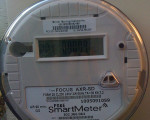
A seemingly normal suburban neighborhood in Austin, Texas is actually more than it appears. The Mueller neighborhood is, in fact, a smart grid project where residents generate and make money from their solar panels. Residents also have access to minute-by-minute data regarding their energy use, giving them an extremely high degree of stewardship and empowerment over their energy habits. Residents of this neighborhood are arguably the most connected energy consumers in the country.
The Mueller neighborhood was created by Pecan Street Inc. in collaboration with the City of Austin, Austin Energy, the University of Texas, and multiple other organizations, including the Environmental Defense Fund. Together, these organizations set out to create a model of a clean energy neighborhood that could potentially be implemented across the country. The project began in 2008 and there are now Mueller neighborhoods using the same model in four different cities, indicating that the model can be successfully applied to various climates ad environmental needs.
For more information about the Mueller neighborhood, read the full article at http://www.edf.org/blog/2014/07/01/smart-energy-experiment-texas-will-benefit-you-too


